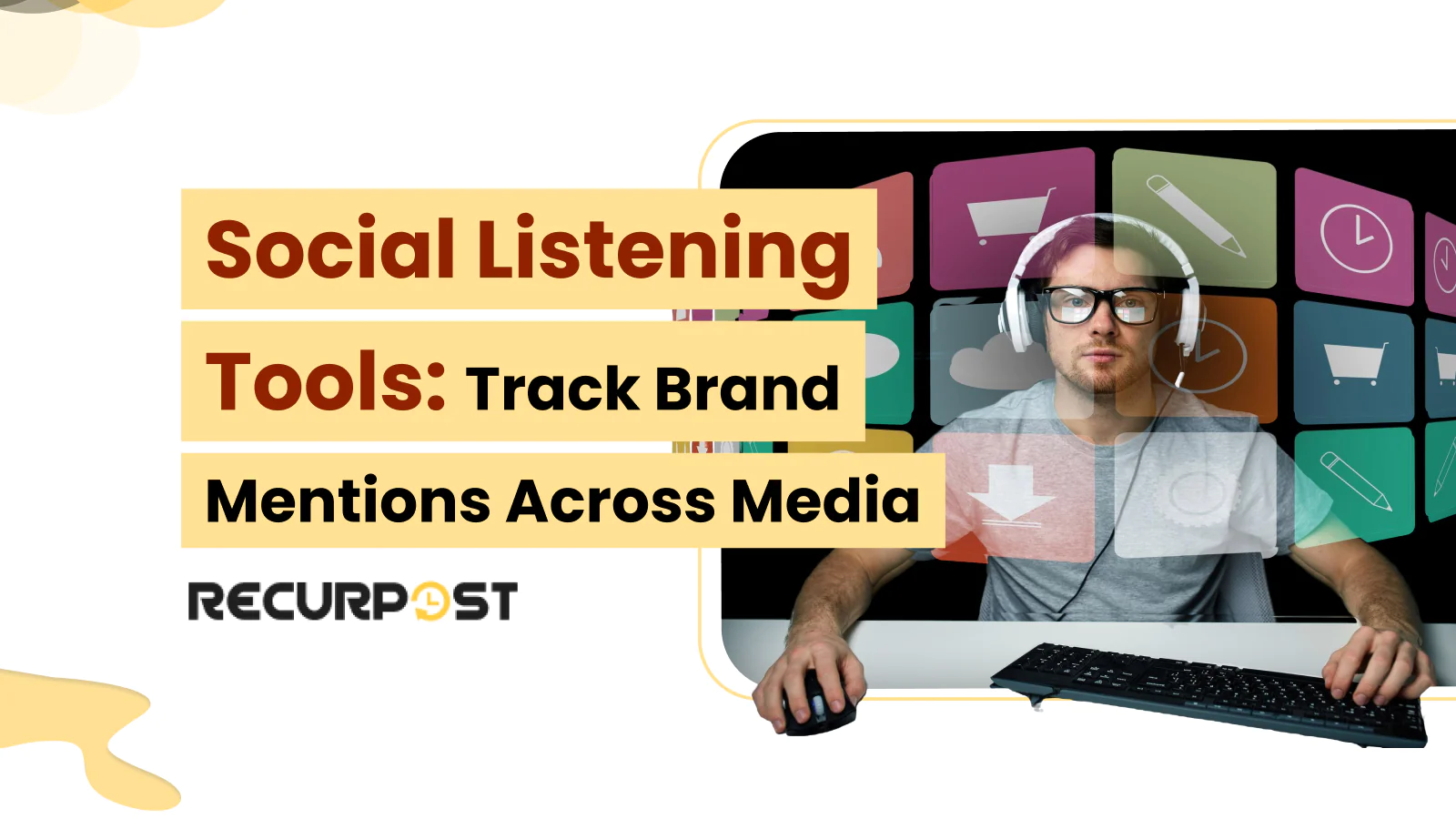If you’re a social media manager or marketer, staying on top of what’s being said about your brand matters significantly. Social listening tools, which are software applications that monitor and track online conversations about brands across social media platforms and the web, help you stay informed about what people are saying about your brand. These social media monitoring software allow you to monitor conversations across platforms, track mentions of your brand or relevant keywords, and even gauge public sentiment. Social listening tools uncover insights that shape your social media strategy, strengthen customer engagement, and protect your brand’s reputation on major social networks.
But with so many options available, how do you choose the right one?
In this post, we’ll walk you through the top 10 social listening tools that every social media marketing team, social media manager, and digital marketing agency should consider. These social media monitoring tools deliver insights for tracking trends, monitoring competitors, and measuring campaign effectiveness.
Plus, we’ll explain the key features to look for when selecting the best social media tracking tools for your business. In this guide, you’ll also find tool comparisons, pricing insights, free alternatives, and key features that help you decide which platform, like RecurPost, Brandwatch, or Meltwater, fits your goals best.
Essential Features for the Best Social Listening Tools
When selecting the best social listening tool, focus on the features that will give you the most value for social media monitoring of your business. Effective social media listening tools enable you to monitor trends, manage brand reputation, and track competitor activity. Here are the key features you should look for in the best social media monitoring tools:
1. Sentiment Analysis
Effective social media listening tools analyze sentiment behind brand or product mentions on social media channels. This means it can identify whether conversations are positive, negative, or neutral. Sentiment analysis helps you gauge public opinion, identify potential issues before they escalate, and adjust your social media strategy accordingly.
2. Trend and Crisis Monitoring
The best social media intelligence tools offer real-time alerts to monitor industry trends or potential PR crises, with notifications delivered immediately when your brand is mentioned online. Social media moves fast, and you need a social media monitoring tool that can help you track what’s being said about your brand or industry in real time. When a product launch receives negative feedback in online conversations, quick action addresses customer concerns before issues spread.
3. Influencer Identification
Influencers impact brand reputation and marketing reach within social conversations. Top social media listening tools identify key industry influencers, track their conversations, detect emerging trends, and facilitate engagement to boost visibility and audience growth.
4. Competitive Analysis
Social media tracking tools monitor both your brand and competitors through competitive analysis. Tracking competitor activities and audience reactions enables strategic adjustments that maintain market advantage.
5. Real-time Alerts and Notifications
The best social media monitoring tools include real-time monitoring capabilities. Immediate alerts for brand mentions and emerging conversations enable quick responses that maintain conversation relevance.
6. Analytics and Reporting
An effective social listening tool should provide detailed analytics and reports that break down the data through customizable dashboards, visual charts, and exportable documents, making complex social media data accessible and shareable with stakeholders. These reports allow you to track your progress over time, measure campaign performance, and justify your marketing efforts. Select social media monitoring tools with integrated analytics and user-friendly dashboards delivering comprehensive insights.
7. Multi-Channel Listening: Track Conversations Everywhere
Great listening tools go beyond Facebook or Instagram. RecurPost and others let you monitor across blogs, forums, YouTube, and even review platforms. This wide coverage gives you a 360° view of your brand presence.
8. Real-Time Monitoring and Instant Alerts
Social media conversations happen in real time, and your listening tool should keep pace. The best platforms offer instant or near-instant notifications the moment your brand, product, or keywords are mentioned online. Whether it’s praise, a customer complaint, or a trending opportunity, real-time alerts help you stay proactive instead of reactive. Immediate insights allow your team to respond swiftly, whether it’s joining a rising trend, handling a support issue, or mitigating a potential PR crisis.
How to Choose the Right Tool for Your Needs?
Selecting a social listening tool depends on these factors:
- Business Size and Scope: Small businesses need affordable options while large agencies require advanced features.
- Pricing and Scalability: The tool should fit your budget and scale with business growth.
- Integration Capabilities: The tool must integrate with your existing platforms, like CRM systems and analytics tools.
- Specific Needs: Your primary goals determine tool selection—whether tracking brand mentions, analyzing sentiment, or monitoring competitors.
Why Every Brand Needs a Social Listening Tool: Key Benefits for Business Growth
With conversations happening at lightning speed across social media, brands must actively listen to what their audience is saying. A social listening tool helps monitor, analyze, and respond to these conversations, making it an essential part of any modern marketing strategy.
Here’s why your brand needs it:
- Understand Your Audience Deeply
Social listening provides insights into what your customers are talking about, their preferences, and pain points. Audience sentiment analysis guides the creation of content and products matching exact customer needs.
- Stay Competitive
Competitor mention monitoring identifies strengths and weaknesses. This data refines strategies and positions your brand advantageously against competitors.
- Protect Your Brand Reputation
Social listening tools detect negative feedback early, enabling prompt resolution before issues escalate, which builds audience trust and loyalty.
- Spot Emerging Trends
Identification of popular industry topics and conversations allows capitalization on trends, maintaining audience relevance.
- Enhance Customer Service
Quick responses to customer complaints, queries, or praise create positive experiences. Social listening tracks these conversations for real-time engagement.
- Measure Campaign Performance
Campaign performance measurement analyzes reach, engagement, and sentiment. This data-driven approach refines future campaigns for greater success.
- Drive Business Growth
Social listening uncovers market gaps, new product ideas, and personalized solution opportunities that directly impact business growth.
Free Social Listening Tools: Get Started Without Spending
You don’t need a big budget to start listening to your audience. If you’re testing the waters or running a lean operation, these free tools offer solid basics for monitoring your brand online:
1. Google Alerts
Set it and forget it! Google Alerts tracks keywords across blogs, news sites, and websites, sending you email updates whenever your chosen terms appear online.
Best for: Easy web-based brand monitoring.
2. X Pro (formerly TweetDeck)
Built for real-time Twitter activity, TweetDeck helps you follow hashtags, mentions, and keywords through customizable columns.
Best for: Live Twitter tracking and engagement.
3. Social Searcher
This freemium tool scans multiple social media platforms and offers basic sentiment analysis. Social Searcher is great for capturing quick, multi-platform overviews.
Best for: Real-time social snapshots across networks.
When to Upgrade to Paid Tools
While free tools provide a starting point, businesses typically outgrow them as their social listening needs become more sophisticated. Consider upgrading to a paid solution like RecurPost when you need:
- Comprehensive platform coverage beyond what free tools offer
- Advanced analytics to measure sentiment and engagement metrics
- Automated reporting to save time and provide deeper insights
- Team collaboration features for coordinated social media management
- Integrated publishing and listening capabilities in one platform
10 Popular Social Listening Tools: Practical Social Listening Tools Examples
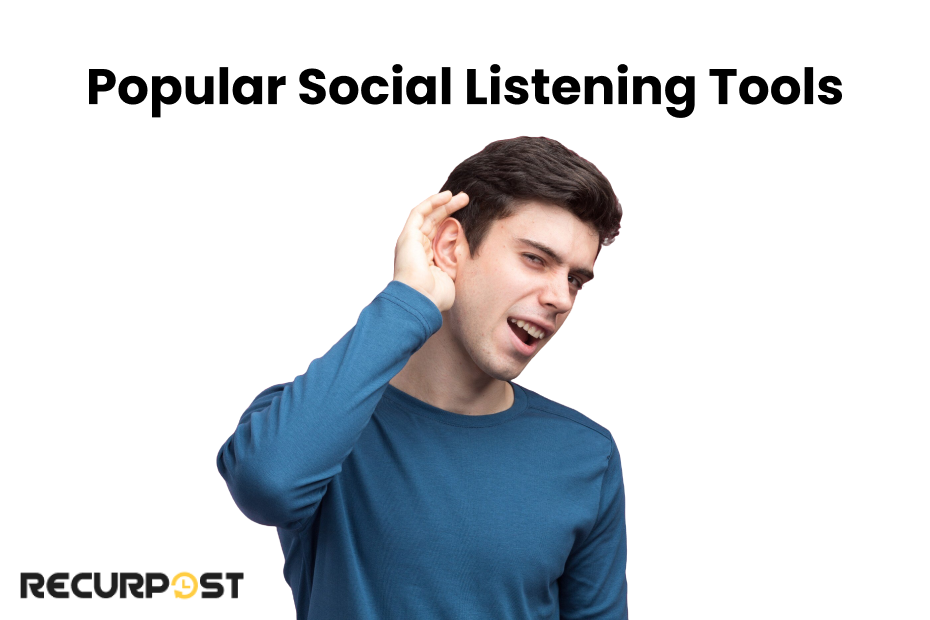
Businesses and agencies tracking social media conversations, sentiment, and brand mentions need the right social listening tools. These social media monitoring platforms help you stay ahead of trends, identify customer feedback, and even monitor competitors. Here are the top social media monitoring tools to consider.
1. Brand24
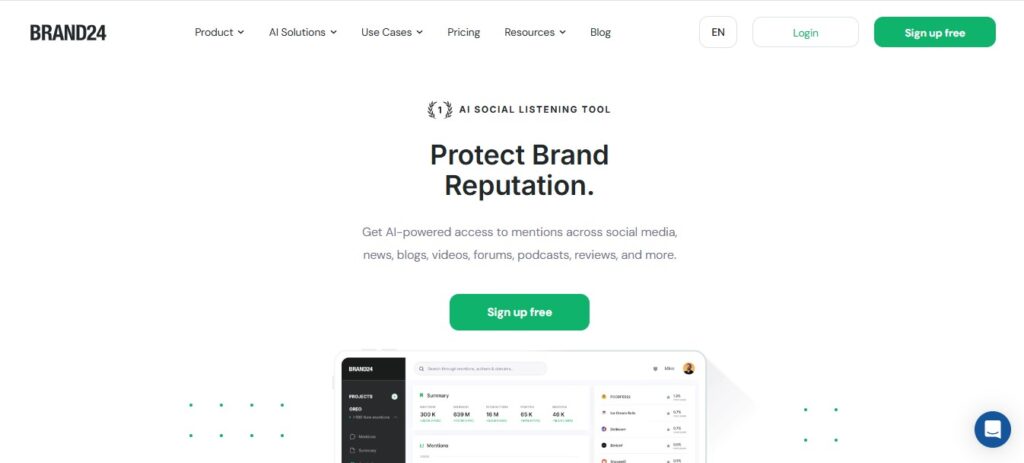
Brand24 tracks brand, product, and competitor mentions across social media, blogs, news websites, and forums with a user-friendly interface. Small to medium-sized businesses benefit from its real-time monitoring and historical data tracking for brand reputation management.
Best Feature: Real-time mentions and alerts for immediate response.
Pros:
- Ease of Use: The interface is intuitive, making it simple to track mentions and engage with users.
- Affordable: One of the most budget-friendly options for small to mid-sized businesses.
- Real-Time Alerts: Get notified instantly when your brand is mentioned online, allowing for quick action.
- Sentiment Analysis: Helps gauge whether mentions are positive, negative, or neutral, providing quantitative analysis of public perception that informs strategic decision-making.
Cons:
- Basic Reporting: While the data is useful, it lacks the deeper analytical insights available in more advanced tools.
- Limited Advanced Features: As it’s more geared toward small businesses, it doesn’t offer advanced customization options for enterprise needs.
2. Meltwater
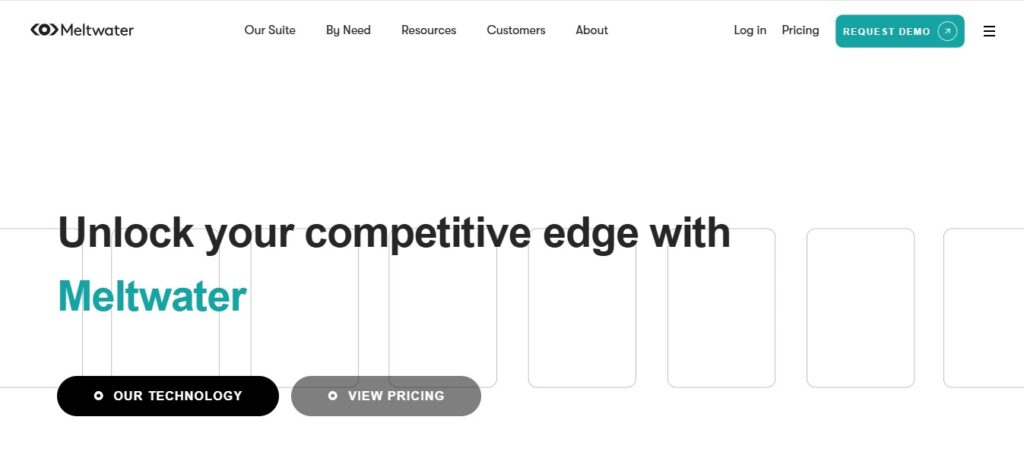
Meltwater is an enterprise-level social listening platform designed for large organizations that not only tracks brand mentions but also provides comprehensive media intelligence across global markets, helping businesses understand trends, analyze the competitive landscape, and measure the impact of media coverage with advanced analytics capabilities. It’s best suited for large enterprises and global companies looking for detailed insights and media coverage.
Best Feature: Advanced analytics for comprehensive reporting on trends and sentiment across multiple channels.
Pros:
- Global Coverage: Provides insights from news outlets, blogs, and social media across the globe, including in different languages.
- Customizable Reports: Create reports that focus on specific data points important to your business strategy.
- Media Intelligence: Helps track the effectiveness of media campaigns, making it a valuable tool for PR teams.
- Influencer Tracking: Identify influencers and their impact on your brand.
Cons:
- High Cost: With advanced features comes a higher price tag, which may not be suitable for smaller businesses.
- Complex Interface: Due to its extensive features, the tool can be overwhelming for beginners.
3. Hootsuite Insights
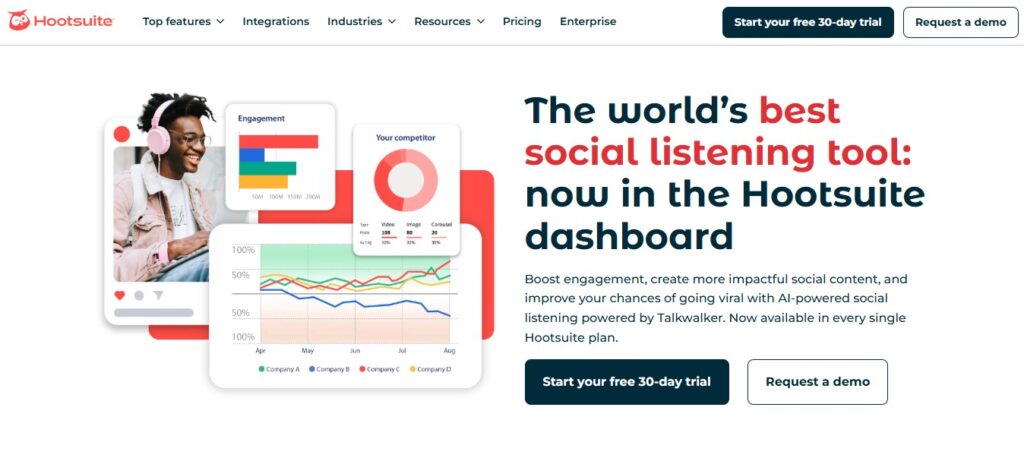
Powered by Brandwatch, Hootsuite Insights is a robust tool that integrates social listening directly into the Hootsuite social media management platform, allowing users to monitor brand mentions, track sentiment, and analyze conversations without switching between different software environments. This makes it an ideal solution for agencies and brands managing multiple accounts across various platforms. It offers powerful analytics, sentiment tracking, and real-time social media monitoring.
Best Feature: Deep integration with Hootsuite for seamless social media management and listening.
Pros:
- Unified Platform: Combines social listening and management in one place, making it ideal for users already familiar with Hootsuite.
- Sentiment and Trend Analysis: Provides insights into how users feel about your brand and tracks upcoming trends.
- Real-Time Data: Access live data feeds for tracking conversations and mentions.
- Advanced Analytics: The data can be analyzed and visualized to help you better understand audience behaviors.
Cons:
- Expensive: Not the most cost-effective solution for small businesses or startups.
- Best for Larger Teams: Its depth of features and interface can be challenging for small teams to fully utilize.
4. Sprinklr
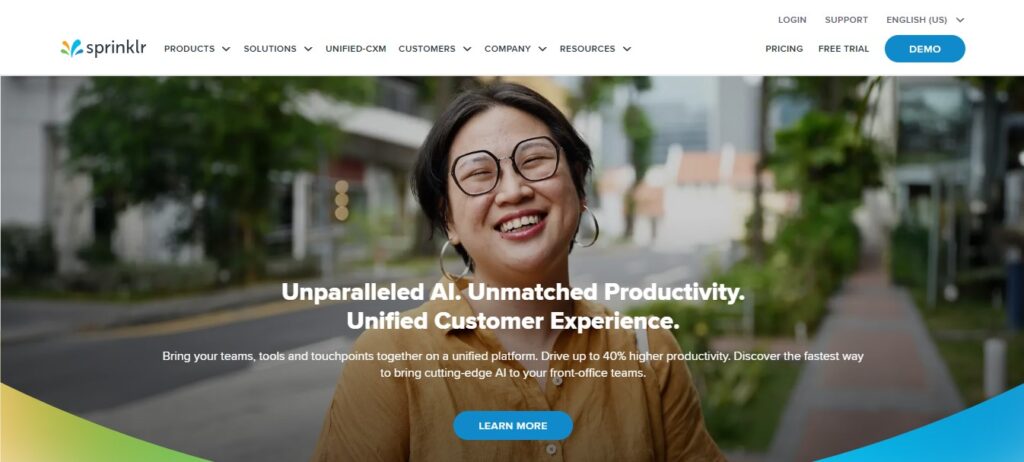
Sprinklr excels at social listening within its social media management platform. Large companies and agencies use its multi-channel integration for social media monitoring, customer experience management, and real-time feedback tracking. The platform tracks brand mentions, sentiment, and marketing campaign performance across social media platforms.
Best Feature: Comprehensive social listening and customer experience management on a single platform.
Pros:
- Multi-Channel Listening: Track conversations across social media, blogs, news, and other digital channels.
- Customer Experience Integration: Combines social listening with customer support and service tools to enhance brand loyalty.
- Detailed Analytics: Provides deep insights into audience sentiment and social trends.
- AI-Powered Insights: Uses AI to detect new trends and gauge customer sentiment at scale.
Cons:
- Complex Setup: The system is complex to set up, requiring training and time for implementation.
- High Cost: Pricing may be prohibitive for smaller businesses or those with limited budgets.
5. Mention
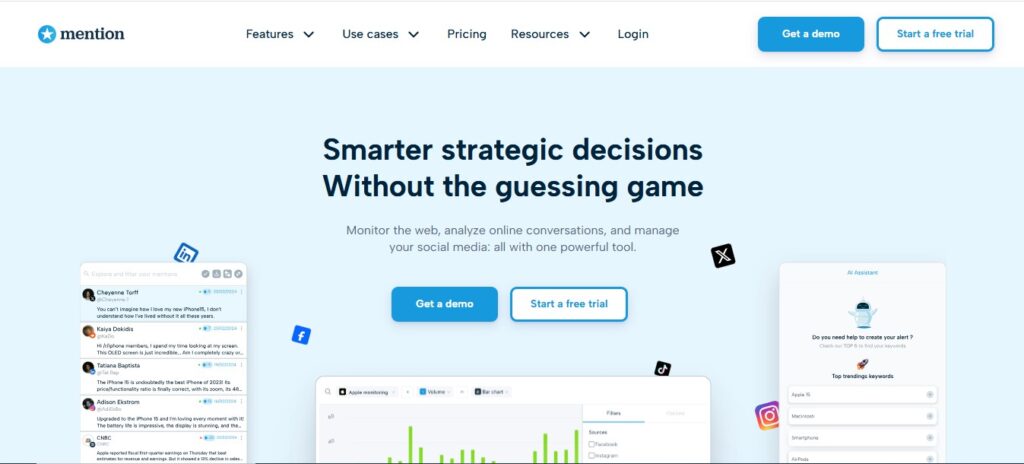
Mention tracks brand mentions across social media platforms, blogs, and news outlets in real-time. Small businesses and startups choose this tool for its simplicity and affordability.
Best Feature: Simple, real-time tracking with instant notifications.
Pros:
- Affordability: One of the most budget-friendly options available.
- Real-Time Alerts: Get immediate alerts when your brand is mentioned.
- Simple Interface: Easy to set up and use, even for beginners.
- Sentiment Analysis: Tracks not only mentions but also the sentiment behind them.
Cons:
- Limited Features: Compared to more advanced tools, it lacks deeper analytics and customizable reporting.
- Less Robust Social Listening: Doesn’t capture data as deeply as some of the more advanced platforms like Meltwater or Brandwatch.
6. Talkwalker
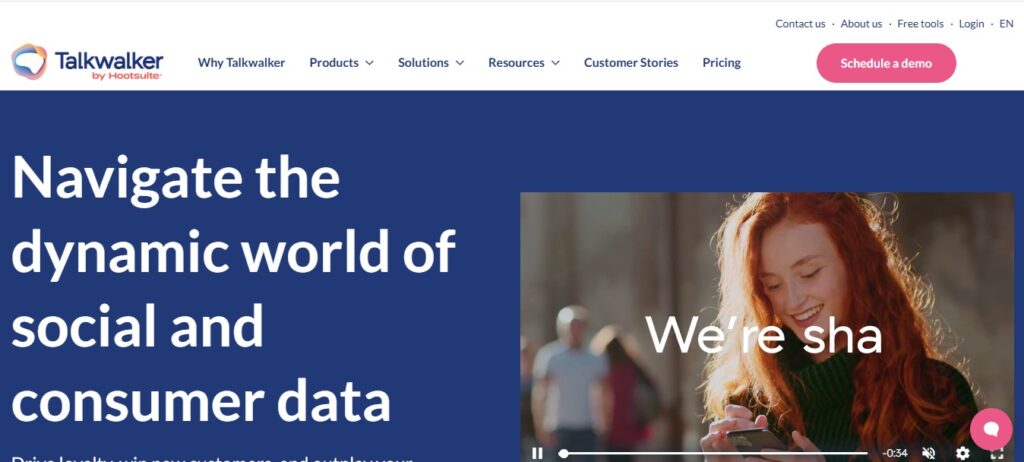
Talkwalker delivers AI-powered analytics for brand mention tracking, sentiment measurement, and trend monitoring across social media, blogs, news, and offline conversations. Companies needing detailed, actionable social media insights select this comprehensive tool.
Best Feature: AI-powered trend detection and sentiment analysis.
Pros:
- AI-Driven Insights: Leverages artificial intelligence to track upcoming trends and consumer behavior.
- Visual Listening: Capable of analyzing images and videos to detect brand logos and visual content.
- Advanced Analytics: Provides in-depth analytics on sentiment, trends, and the effectiveness of campaigns.
- Global Reach: Offers insights from a wide range of sources, including news outlets and forums across multiple languages.
Cons:
- Complex Setup: The tool can be complicated to set up and use without prior experience.
- Expensive: Not ideal for small businesses or individuals due to its higher pricing.
7. Brandwatch
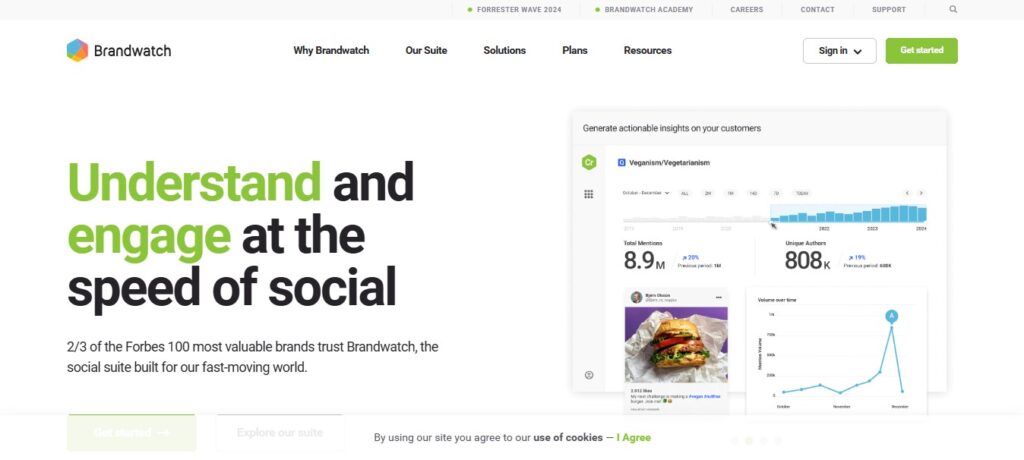
Brandwatch tracks and analyzes social media mentions and industry trends for brands, agencies, and marketers. Data-driven businesses select this powerful platform for its detailed insights into customer behavior, competitor activity, and overall sentiment.
Best Feature: Advanced reporting and deep data-driven insights into your social media landscape.
Pros:
- Detailed Insights: Get granular insights into customer sentiment, trends, and competitor activity.
- Customizable Dashboards: Build custom reports and dashboards tailored to your business needs.
- Competitor Monitoring: Track your competitors’ social media presence and strategies.
- Extensive Data: Covers a vast range of social media platforms, blogs, and news sites.
Cons:
- Expensive: Not the most affordable option for small businesses.
- Requires Time: Can be complex for new users and may take time to master.
8. BuzzSumo
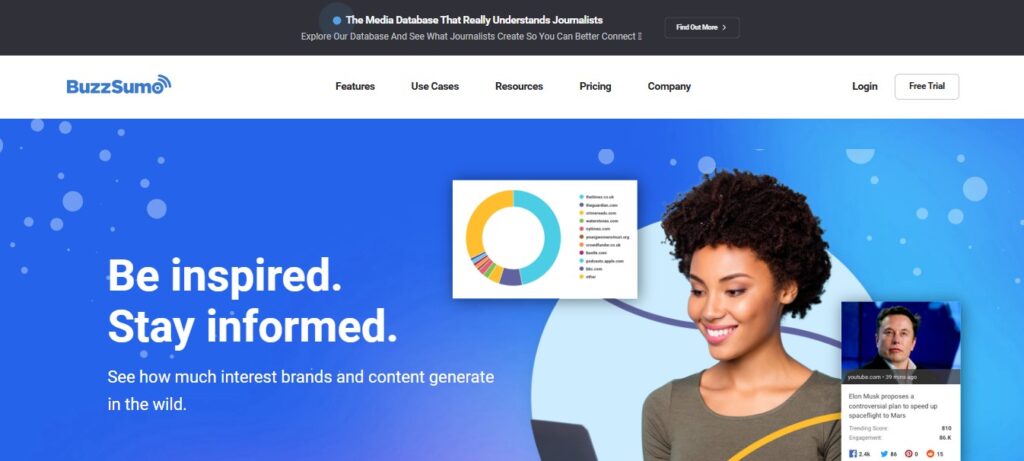
BuzzSumo tracks brand mentions, content performance, and influencer activity across social media and the web. Content marketers and digital agencies use this content marketing tool to measure content effectiveness.
Best Feature: Content performance and influencer tracking.
Pros:
- Content Performance: Tracks how well your content is performing across social platforms.
- Influencer Identification: Helps identify key influencers who are talking about your brand or industry.
- Ease of Use: Simple interface and easy to get started with.
Cons:
- Limited Social Listening Features: Doesn’t offer the same depth of social listening as tools like Meltwater or Talkwalker.
- Not for Full-Scale Monitoring: Primarily focused on content performance rather than full social media monitoring.
9. Digimind
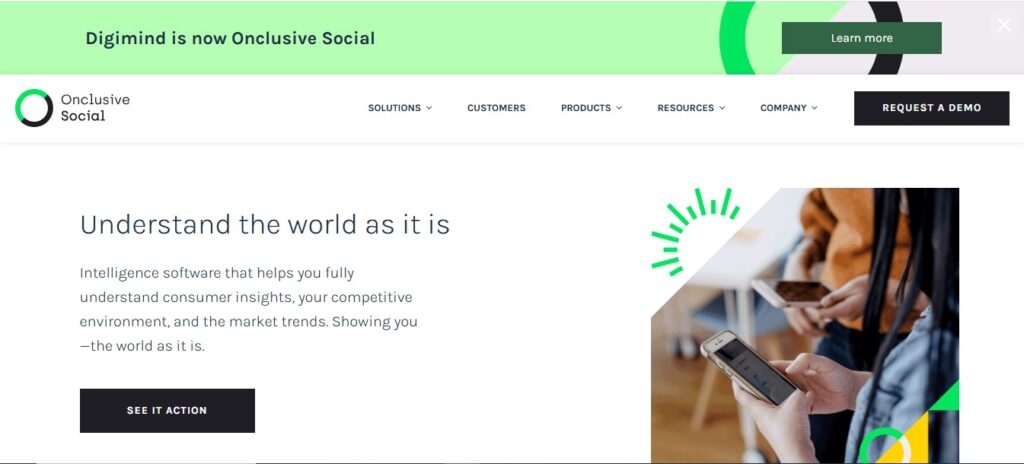
Digimind monitors and analyzes social media conversations, news, blogs, and forums. Companies requiring robust social monitoring with global coverage select this tool for its real-time data, sentiment analysis, and competitive insights.
Best Feature: Comprehensive monitoring and sentiment analysis across multiple channels.
Pros:
- Global Coverage: Tracks social media and online conversations from around the world.
- Sentiment Analysis: Provides detailed insights into how users feel about your brand.
- Customizable Dashboards: You can create dashboards that focus on the data points that matter most to your business.
Cons:
- Learning Curve: It can be difficult to navigate for new users.
- Expensive: Pricing might be too high for small businesses.
10. Keyhole
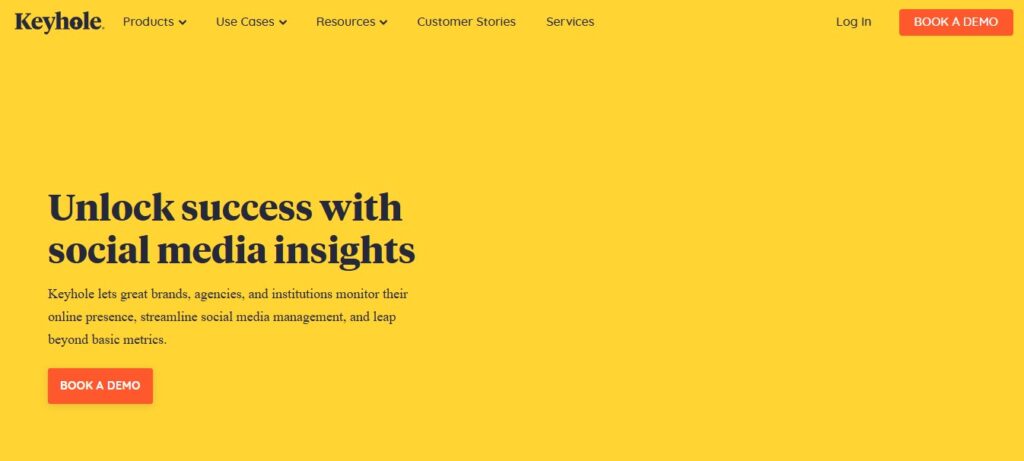
Keyhole monitors, tracks, and analyzes social media data in real-time. Businesses track branded hashtags, keywords, and mentions to gather actionable insights on brand sentiment and performance.
Best Feature: Real-time social media monitoring and hashtag tracking.
Pros:
- Real-Time Data: Instant data collection and tracking of hashtags, mentions, and keywords.
- User-Friendly Interface: Simple and intuitive dashboard for easy navigation.
- Influencer Tracking: Helps identify key influencers engaging with your brand.
- Advanced Analytics: Provides detailed reports on audience sentiment, engagement, and campaign performance.
Cons:
- Limited Channel Coverage: Primarily focused on Twitter, Instagram, and other social networks, but lacks the breadth of coverage of larger tools.
- Pricing: The cost can be high for small businesses.
What About Enterprise Needs?
Tools like Meltwater and Sprinklr offer robust features for large teams with high data needs. If you’re an agency or brand manager who needs scalable listening without enterprise pricing, RecurPost balances functionality and affordability.
Conclusion
With social listening tools, there’s no one-size-fits-all solution. The right tool refines your digital marketing strategy, whether you focus on brand sentiment, competitor analysis, or social media mention tracking. Social media audits produce optimal results when streamlined.
Using these social media monitoring tools and social media measurement tools, businesses can stay ahead of trends, improve customer engagement, and swiftly address potential issues, all while gaining valuable insights from competitor tracking tools. Success requires selecting tools aligned with specific objectives and budget constraints for data-driven decision making.
Frequently Asked Questions
1. Can social listening tools help track customer feedback?
Yes, social listening tools track customer feedback across social media platforms. They monitor mentions, comments, and reviews about your brand or product, revealing customer sentiments and satisfaction levels. This enables quick action on both positive feedback and complaints.
2. Are social listening tools helpful for crisis management?
Absolutely. During PR crises or negative publicity, social listening tools detect and enable reactions to negative mentions in real-time. Monitoring brand mentions and public sentiment allows businesses to address issues before escalation and manage their reputation effectively.
3. How do social listening tools track online discussions beyond social media?
While most tools monitor primarily social media, platforms like Talkwalker and Meltwater extend coverage to news outlets, blogs, and forums. This broader monitoring captures conversations about your brand beyond traditional social platforms.
4. Can social listening tools help with content strategy?
Yes, social listening tools reveal what content resonates with your audience. Tracking trending topics, popular keywords, and audience-engaging content types shapes content strategy to match customer interests and boost engagement.
5. How do social listening tools deal with different types of media (text, images, videos)?
Many social listening tools incorporate AI-driven image and video recognition features. Platforms like Talkwalker track branded images or logos across the web, while others analyze video content for mentions and brand visibility. Businesses monitor both text-based mentions and influential visual content.
6. How accurate is the competitor analysis in social listening tools?
Competitor analysis in social listening tools can provide useful insights, but accuracy depends on the platform’s ability to track a competitor’s social media activity and sentiment. The ftools usually identify mentions and track trends, but human review might still be needed for deep insights, especially when analyzing complex or nuanced conversations.
7. Can social listening tools be used for market research?
Yes, social listening tools support market research by revealing audience behavior, market gaps, and emerging trends. They capture real-time customer preference feedback and uncover unspoken needs that shape product development and marketing strategies.
8. Are there any free social listening tools available?
There are several free social listening tools available, including Google Alerts, TweetDeck, Social Mention, and Hootsuite’s free plan, though these options typically come with limitations in data volume, historical access, and advanced analytics compared to paid alternatives. While these free social media monitoring tools can provide basic monitoring, they lack the advanced features like sentiment analysis, competitor tracking, or global coverage that paid tools such as Brandwatch or Talkwalker offer.
9. How do social listening tools impact SEO?
Social listening tools enhance digital marketing efforts by tracking keywords that generate buzz on social media, identifying audience preferences, measuring campaign performance, and providing competitive intelligence that helps marketers refine their overall digital strategy. You can identify popular search terms, understand what your audience is discussing, and align your content strategy with trending topics, improving your website’s visibility in search results on social media.
10. Do social listening tools offer historical data?
Many social listening tools like Brandwatch and Meltwater include historical data access, enabling trend tracking, sentiment analysis, and conversation monitoring over time. This historical view identifies long-term customer behavior shifts and brand perception evolution for informed decision-making.

Ruchi Dhimar is a skilled content writer with 4 years of experience. She is passionate about crafting compelling narratives, specializing in writing content for different industries.
